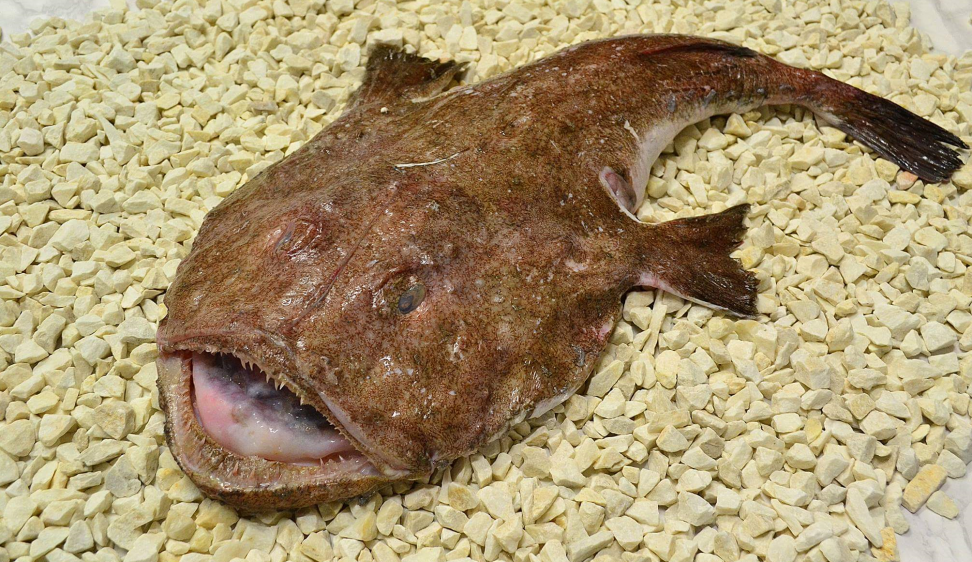Monkfish whole 3000+

SPECIES DESCRIPTION
The head is of enormous size, broad, flat, and depressed, with the remainder of the body appearing merely like an appendage. The wide mouth extends all around the anterior circumference of the head, and both jaws are armed with bands of long, pointed teeth, which are inclined inwards, and can be temporarily depressed so as to offer no impediment to an object gliding towards the stomach, while still preventing its escape from the mouth. The pectoral and ventral fins are so articulated as to perform the functions of feet, the fish being enabled to "walk" on the bottom of the sea, where it generally hides itself in the sand or amongst seaweed. All around its head and also along the body, the skin bears fringed appendages resembling short fronds of seaweed. These structures, combined with the ability to change the colour of the body to match its surroundings, assists the fish greatly in concealing itself in its lurking places, which are selected for their abundance of prey.
Species of Lophius have three long filaments sprouting from the middle of their heads; these are the detached and modified three first spines of the anterior dorsal fin. As with all anglerfish species, the longest filament is the first, which terminates in an irregular growth of flesh, the esca (also referred to as the illicium), and is movable in all directions; this modified fin ray is used as a lure to attract other fish, which the monkfish then seize with their enormous jaws, devouring them whole. Whether the prey has been attracted to the lure or not is not strictly relevant, as the action of the jaws is an automatic reflex triggered by contact with the esca.
Monkfish, like most anglerfish, are also characterised by an enormously distensible stomach, which allows an individual monkfish to swallow prey fully as large as itself.[3][4] Monkfish grow to a length of more than 150 cm (4.9 ft); specimens of 100 cm (3.3 ft) are common.
